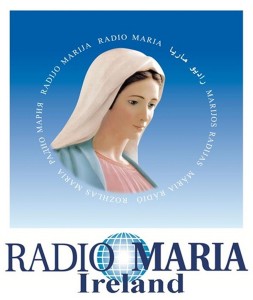On January 29 the Irish calendars commemorate Saint Blath, or Blathnait. The Martyrology of Donegal records:
29. A. QUARTO KAL. FEBRUARII. 29.
BLATH, Virgin.
and the table of the Martyrology gives the Latin version of her name:
Blath, virgin (Flora V)..... 29 Jan.
Blath is the Irish word for 'flower', and so the Martyrology of Gorman makes a pun by recording her as 'blooming Blath'. Her name is thus Latinized as Flora.
The notes to the Martyrology of Oengus also simply record her name for this day, but in the notes for the feast of Saint Brigid on February 1st we find that Saint Blath was a member of the monastic household of Kildare, where she had the role of cook. The stories of Saint Brigid often have a domestic aspect to them and the miracle of Loch Lemnachta is a classic example:
Eight bishops came to Brigit out of Hui Briuin Cualann, i.e. From Telach na n-epscop to Loch Lemnachta beside Kildare on the north. Brigit asked her cook, Blathnait, whether she had food for the bishops. Dixit ilia non. Brigit was ashamed: so the angel told her to milk the cows again. The cows were milked and they filled the tubs, and they would have filled all the vessels in Leinster, so that the milk went over the vessels and made a lake thereof, unde Loch Lemnachta 'New-milk Lough' dicitur.
In his survey of the monasteries of Ireland, Mervyn Archdall assigned the repose of Saint Blath to the same year that he believed her mistress also departed:
523. Died Saint Blatha, or Flora, cook to Saint Brigid.
but he does not expand on the reasons for doing so.
As not a great deal has been recorded about the life of Kildare's saintly cook, I thought it might be interesting to have a look at Saint Blath's domain - the monastic kitchen:
Domestic arrangements are mentioned incidentally in the texts. A monastery usually had a kitchen separate from the refectory, and this was where the food was prepared. Meat had to be dried and salted. We know very little about how the Irish obtained their salt, although it was an essential commodity, and a lump of salt was an attractive present. It could have been obtained from sea-water by a process of evaporation, but there is some evidence that seaweed was collected and burned and the salty ashes used in curing meat. The monastic kitchen seems to have had no oven, and pottery is rare from excavated Irish sites except in the north-east. Dough for the bread was kneaded in wooden troughs and then baked on a griddle or baking flag, and bullauns which are often found on sites may have been used for grinding and preparing food. A cauldron, suitable for stews, was a luxury article, whilst meat might be roasted on spits or boiled in water heated by hot stones: clay pits or wooden vats could be used for this purpose.
K. Hughes and A. Hamlin, The Modern Traveller to the Early Irish Church (London, 1977), 44.
This post has been taken from a series on the lives of the Irish saints at my blog Omnium Sanctorum Hiberniae.












































